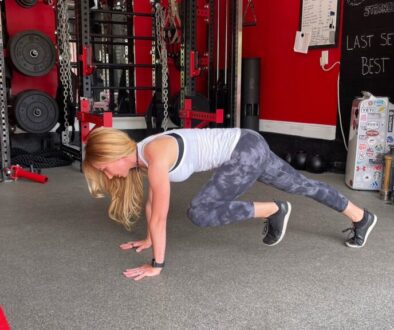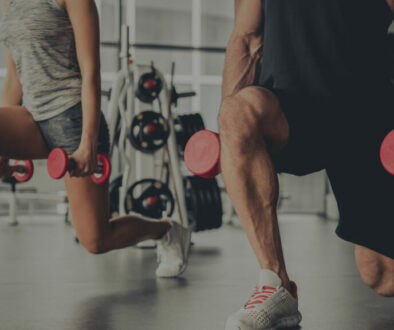How to Choose the Right Athletic Shoes for Your Workouts
When it comes to working out, one of the most important pieces of equipment you can invest in is a good pair of athletic shoes. The right shoes can make a significant difference in your performance, comfort, and overall workout experience. With so many options available on the market, it can be overwhelming to choose the best athletic shoes for your specific needs. In this article, we will discuss how to choose the right athletic shoes for your workouts.
Understanding Your Foot Type
Before you start shopping for athletic shoes, it’s essential to understand your foot type. There are three main types of feet: flat feet, neutral feet, and high-arched feet. Knowing your foot type will help you determine the level of support and cushioning you need in a shoe.
Flat Feet
Flat-footed individuals have little to no arch in their feet, which can lead to overpronation. This means the foot rolls inward excessively while walking or running. Shoes with added arch support and stability features are recommended for individuals with flat feet to help distribute weight evenly and prevent injuries.
Neutral Feet
Neutral feet have a visible arch that is neither too high nor too low. Individuals with neutral feet have a more balanced foot strike and can usually wear a variety of athletic shoes comfortably. Look for shoes with moderate arch support and cushioning for optimal comfort and performance.
High-Arched Feet
High-arched individuals have a pronounced arch in their feet, which can lead to supination. This means the foot rolls outward during walking or running, putting extra stress on the outer edge of the foot. Shoes with extra cushioning and flexibility are recommended for individuals with high-arched feet to absorb shock and provide support.
Different Types of Athletic Shoes
When it comes to athletic footwear, there are various types of shoes designed for specific activities. Choosing the right type of shoe for your workout can make a significant difference in your comfort, performance, and injury prevention. Here are some of the most common types of athletic shoes:
- Running Shoes: Running shoes are designed for individuals who engage in activities like jogging, sprinting, or long-distance running. These shoes typically have cushioned midsoles, breathable uppers, and a supportive heel to absorb shock and provide comfort during repetitive impact. Look for running shoes with features that match your running style, foot type, and terrain.
- Cross-training Shoes: Cross-training shoes are versatile athletic shoes that cater to a wide range of activities, including gym workouts, weightlifting, aerobics, and cross-training classes. These shoes offer a balance of cushioning, support, and stability to accommodate various movements and exercises. Look for cross-training shoes with supportive midsoles, durable outsoles, and flexibility for multidirectional movements.
- Basketball Shoes: Basketball shoes are specifically designed for the high-impact, lateral movements, and jumping involved in basketball games. These shoes typically have high-top designs for ankle support, cushioning in the heel and forefoot for shock absorption, and traction patterns for quick pivots and cuts on the court. Look for basketball shoes with features that suit your playing style, position, and preferences.
- Tennis Shoes: Tennis shoes are tailored for the quick stops, starts, and lateral movements required in tennis matches. These shoes feature durable outsoles with herringbone patterns for traction on court surfaces, supportive uppers for stability during side-to-side movements, and cushioning in the midsole for comfort during long matches. Look for tennis shoes with features that enhance your agility, speed, and performance on the tennis court.
- Walking Shoes: Walking shoes are designed for individuals who enjoy brisk walking, power walking, or walking for fitness. These shoes provide cushioning and support for a smooth heel-to-toe transition, shock absorption in the heel, and flexibility for natural foot movements. Look for walking shoes with breathable materials, comfortable insoles, and lightweight construction for long walks or daily errands.
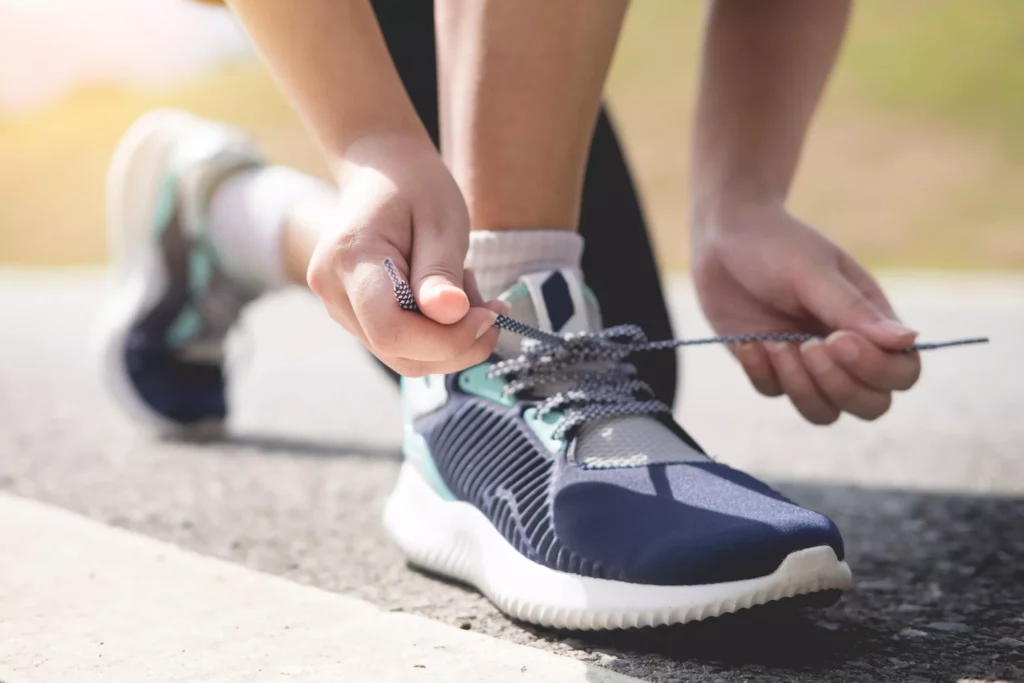
Fit and Comfort
When it comes to athletic shoes, fit and comfort are paramount. Ill-fitting shoes can lead to discomfort, blisters, and even injuries, while comfortable shoes can enhance your performance and overall workout experience. Here are some factors to consider when assessing the fit and comfort of athletic shoes:
Toe Box:
The toe box should provide enough room for your toes to wiggle and move freely without feeling cramped. A snug, but not tight, fit is ideal to prevent slippage and rubbing that can lead to blisters.
Heel Fit:
The heel of the shoe should snugly hold your heel in place without causing any slippage. A secure heel fit is essential for stability and preventing friction that can cause discomfort.
Width:
Athletic shoes come in various widths to accommodate different foot shapes. It’s essential to choose a shoe width that matches the width of your foot to ensure a comfortable fit without squeezing or pinching.
Arch Support:
Adequate arch support is crucial for individuals with flat feet or high arches to prevent overpronation or supination. Look for shoes with built-in arch support or consider using orthotic inserts for additional support.
Cushioning:
The level of cushioning in the midsole and heel of the shoe can impact comfort and shock absorption during high-impact activities like running or jumping. Choose shoes with sufficient cushioning based on your preferred level of comfort and support.
Breathability:
Shoes with breathable materials like mesh or knit uppers allow air circulation to keep your feet cool and dry during workouts. Breathable shoes can help prevent sweating, odor, and discomfort caused by moisture buildup.
Flexibility:
A good balance of flexibility and support in athletic shoes allows for natural foot movements and reduces stiffness or rigidity that can hinder comfort and performance. Flexibility is essential for dynamic movements and agility during workouts.
Break-In Period:
Some athletic shoes may require a break-in period to mold to your feet and provide optimal comfort. Allow for some time to wear the shoes around the house or during light workouts before engaging in intense activities.
Cushioning
Cushioning in athletic shoes plays a crucial role in providing comfort, shock absorption, and support during high-impact activities. The level of cushioning in the midsole and heel of the shoe can significantly impact your overall comfort and performance. Here are some key aspects to consider when evaluating the cushioning in athletic shoes:
- Midsole Cushioning: The midsole of the shoe is where most of the cushioning is located. It helps absorb shock and impact forces during activities like running, jumping, or cross-training. Look for shoes with ample midsole cushioning to provide a comfortable and supportive ride.
- Heel Cushioning: The heel area of the shoe is particularly important for cushioning, especially during heel strikes in activities like running or walking. Shoes with extra cushioning in the heel can help reduce the impact on joints and muscles, enhancing comfort and reducing the risk of injuries.
- Forefoot Cushioning: Some athletic shoes also offer additional cushioning in the forefoot area to improve comfort and responsiveness during activities that involve toe-off movements, such as sprinting or jumping. Consider shoes with adequate forefoot cushioning for better energy return and propulsion.
- Type of Cushioning: Athletic shoes may feature different types of cushioning materials, such as foam, gel, air, or hybrid technologies. Each type of cushioning material offers varying levels of softness, responsiveness, and durability. Choose shoes with cushioning that aligns with your preferences and performance needs.
- Durability: The durability of cushioning in athletic shoes is essential for maintaining comfort and support over time. Look for shoes with resilient cushioning materials that can withstand repeated use and retain their shape and cushioning properties for the long term.
By considering the level, location, type, and durability of cushioning in athletic shoes, you can find a pair that offers the right balance of comfort, support, and shock absorption for your specific activities and preferences.
Stability and Support
In addition to cushioning, stability, and support are crucial aspects to consider when choosing athletic shoes, especially for individuals with pronation issues, weak ankles, or a need for extra support during dynamic movements. Here are some key factors to keep in mind regarding stability and support in athletic shoes:
- Arch Support: Shoes with adequate arch support can help prevent overpronation (excessive inward rolling of the foot) or supination (outward rolling of the foot) during activities like running or jumping. Look for shoes with built-in arch support or consider using orthotic inserts for additional support.
- Heel Counter: The heel counter is the back part of the shoe that surrounds the heel and provides stability and support. A firm heel counter can help keep the heel in place and prevent excessive side-to-side movement, reducing the risk of ankle injuries.
- Midfoot Support: Some athletic shoes offer additional midfoot support through features like a TPU (thermoplastic polyurethane) shank, midfoot strap, or stabilizing technology. This support helps control excessive pronation, enhance stability, and improve overall foot alignment during activities.
- Lateral Support: For activities that involve side-to-side movements like tennis, basketball, or cross-training, shoes with lateral support features can help prevent ankle rolling and improve stability. Look for shoes with reinforced sidewalls, external heel counters, or supportive overlays for added lateral support.
- Fit and Lace-Up System: Ensuring a secure and supportive fit is essential for stability during workouts. Choose athletic shoes with a secure lace-up system and a snug but comfortable fit to prevent slippage and maximize support during dynamic movements.
- Outsole Traction: The outsole of the shoe plays a critical role in providing stability and support through its traction patterns and grip. Look for shoes with a durable outsole and multidirectional lugs or patterns for enhanced traction on different surfaces and terrains.
By prioritizing stability and support in your athletic shoe selection, you can minimize the risk of injuries, improve your performance, and enjoy a more comfortable and secure fit during your workouts. Consider your specific stability needs, foot type, and activity preferences when choosing shoes with the right level of support for your feet.
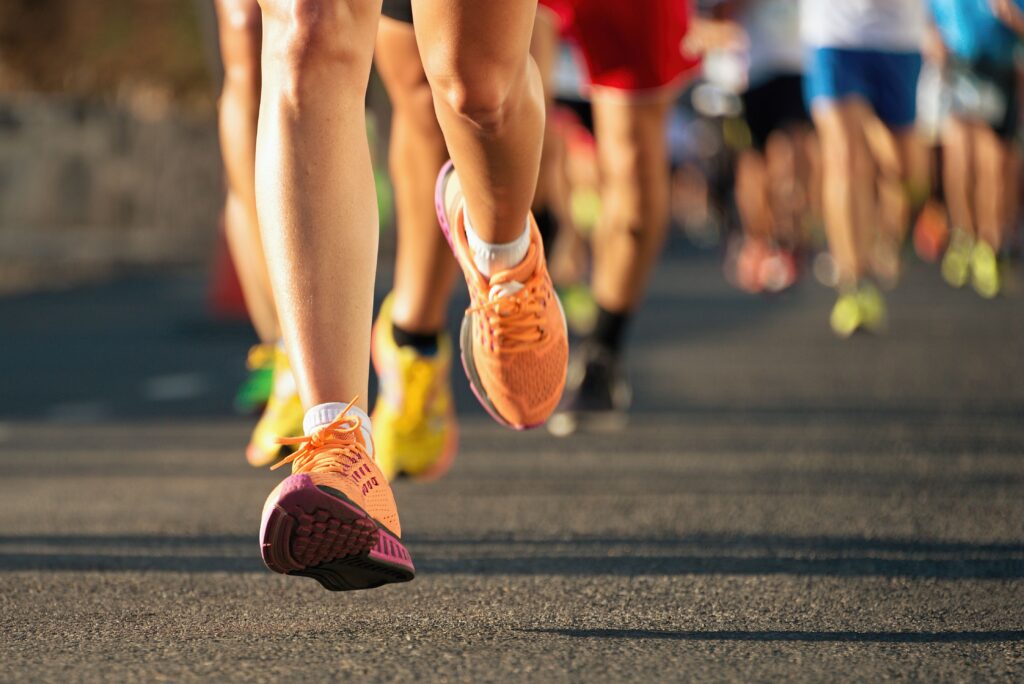
Flexibility
Flexibility in athletic shoes is essential for allowing natural foot movements, promoting agility, and enhancing performance during dynamic activities. Shoes with the right balance of flexibility and support can help prevent stiffness, improve range of motion, and reduce the risk of discomfort or foot fatigue. Here are key considerations when evaluating the flexibility of athletic shoes:
- Forefoot Flexibility: The forefoot area of the shoe should offer flexibility to allow for a smooth toe-off motion during activities like running, jumping, or cutting. Shoes with a flexible forefoot enable natural foot movements and help maximize energy transfer and propulsion.
- Midfoot Flexibility: The midfoot region of the shoe should also provide some degree of flexibility to accommodate foot arch movements and transitions during various activities. A balance of flexibility and support in the midfoot area promotes a more comfortable and efficient stride.
- Outsole Flex Grooves: Look for athletic shoes with strategically placed flex grooves in the outsole to enhance flexibility and bendability in specific areas of the shoe. Flex grooves help mimic the natural bending of the foot and improve traction and grip on varied surfaces.
- Upper Material: The upper material of the shoe can impact flexibility, as softer and more pliable materials like mesh or knit uppers allow for greater foot mobility and flexibility. Consider shoes with flexible uppers that conform to the shape of your foot and provide a comfortable and unrestricted fit.
- Break-In Period: Some athletic shoes may require a break-in period to gradually adjust to your foot movements and provide optimal flexibility. Wear the shoes for short periods initially to allow them to mold to your feet and offer increased flexibility and comfort over time.
- Activity-Specific Flexibility: Different types of athletic shoes may vary in flexibility based on the specific demands of the activity. For example, shoes designed for running may offer more forefoot flexibility for toe-off power, while cross-training shoes may prioritize overall foot flexibility for multidirectional movements.
By considering the level of flexibility in athletic shoes, you can choose a pair that complements your natural foot movements, enhances agility, and encourages efficient performance during various activities.
Durability
Durability is a key factor to consider when selecting athletic shoes, as durable footwear can withstand the rigors of intense workouts, outdoor activities, and regular use over time. Durable shoes provide long-lasting comfort, support, and performance, making them a worthwhile investment. Here are important aspects to assess when evaluating the durability of athletic shoes:
- Outsole Material: The outsole of the shoe is subjected to significant wear and tear from surface abrasion, friction, and impact. Look for athletic shoes with durable rubber outsoles that offer good traction, resist abrasion, and maintain grip on various surfaces.
- Midsole Cushioning: The midsole cushioning material in athletic shoes should retain its shape, responsiveness, and shock-absorption properties over time. Shoes with long-lasting cushioning materials like EVA foam or polyurethane can provide comfort and support for extended periods.
- Upper Construction: The upper material and construction of the shoe influence durability, as it must withstand repetitive movements, stretching, and environmental factors. Choose shoes with sturdy and resilient uppers made from durable synthetic materials, reinforced overlays, or seamless constructions for enhanced durability.
- Stitching and Seams: Check the stitching and seams of the shoe for quality and reinforcement, as strong and secure stitching can prevent premature wear and tear. Shoes with double stitching, reinforced seams, and durable thread are more likely to withstand daily use and physical activity.
- Abrasion-Resistance: Consider the shoe’s resistance to abrasion from rough surfaces, sharp objects, or friction during activities like running or hiking. Shoes designed with abrasion-resistant materials, protective overlays, or reinforced toe caps can prolong their lifespan and maintain their appearance.
- Water and Weather Resistance: For outdoor activities or wet conditions, choose athletic shoes with water-resistant or weatherproof features to protect against moisture, stains, and environmental elements. Shoes with waterproof membranes, treated uppers, or quick-drying materials can enhance durability in adverse conditions.
- Cleaning and Maintenance: Regular cleaning and proper maintenance of athletic shoes can extend their durability and longevity. Follow manufacturer guidelines for washing, drying, and storing your shoes to preserve their performance and appearance.
By prioritizing durability in your athletic shoe selection, you can enjoy long-lasting comfort, support, and performance during your workouts and outdoor adventures. Choose shoes that are built to withstand the demands of your activities and provide lasting value for your athletic footwear needs.
Material and Breathability
The material composition of athletic shoes plays a significant role in determining their breathability, comfort, durability, and overall performance. Different materials offer varying levels of breathability, moisture-wicking properties, flexibility, support, and aesthetic appeal. When assessing the material and breathability of athletic shoes, consider the following factors:
Upper Material:
The upper part of the shoe is the most visible and plays a crucial role in determining breathability. Common upper materials include mesh, knit, synthetic leather, and waterproof membranes. Mesh and knit uppers offer excellent breathability by allowing air circulation to keep your feet cool and dry during workouts. Synthetic leather provides durability and support, while waterproof membranes offer protection against moisture in wet conditions.
Moisture-Wicking Properties:
Some athletic shoe materials are designed with moisture-wicking properties to draw sweat away from your skin and promote evaporation. Moisture-wicking materials like Dri-Fit, Coolmax, or Climalite help keep your feet dry, reduce friction, and prevent discomfort or blisters caused by moisture buildup.
Breathable Lining:
The inner lining of athletic shoes can also impact breathability and comfort. Look for shoes with breathable linings made from moisture-wicking fabrics or mesh to enhance airflow, regulate temperature, and minimize sweat accumulation during workouts.
Ventilation Features:
Some athletic shoes incorporate specific ventilation features like perforations, mesh panels, or breathable overlays to improve airflow and enhance breathability. Ventilation zones strategically placed in high-heat areas like the toe box or midfoot can help dissipate heat and maintain a cool and comfortable foot environment.
Flexibility and Comfort:
The material flexibility of athletic shoes influences comfort, mobility, and performance. Choose shoes with materials that offer a balance of flexibility, support, and breathability to accommodate natural foot movements and reduce stiffness or restriction during activities.
Environment and Activity Considerations:
Consider the specific environmental conditions and activities in which you will be using the athletic shoes. For hot and humid climates, prioritize breathable materials to prevent overheating and discomfort. Select shoes with moisture-wicking properties for intense workouts or long-distance running to keep your feet dry and comfortable.
Maintenance and Care:
Proper care and maintenance of athletic shoe materials can prolong their lifespan and performance. Follow manufacturer guidelines for cleaning, drying, and storing your shoes to preserve their breathability, appearance, and structural integrity.
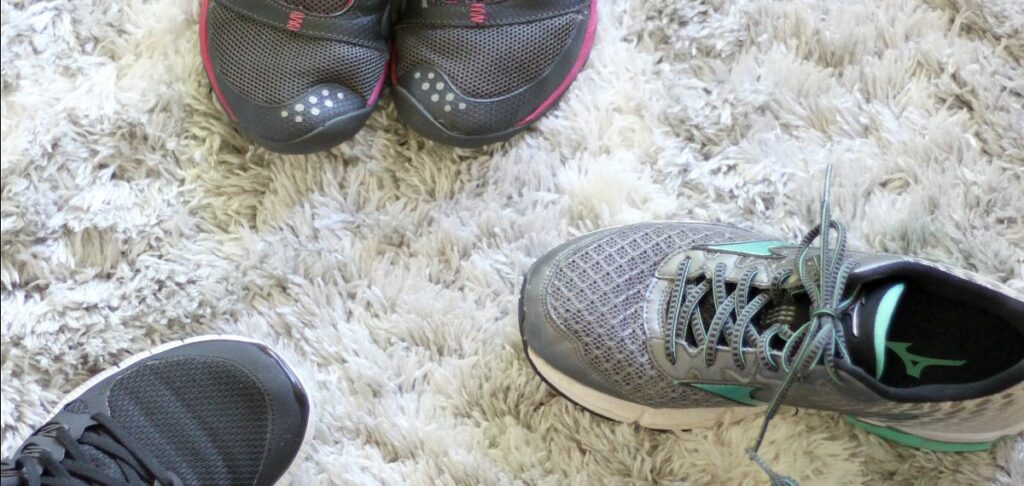
Price
The price of athletic shoes can vary significantly based on factors such as brand, technology, materials, design, features, and performance benefits. When evaluating the price of athletic shoes, consider the following aspects to make an informed purchasing decision:
- Brand Reputation: Established athletic shoe brands with a reputation for quality, innovation, and performance may command higher prices. Brand recognition often reflects the level of research, development, and technology invested in creating durable, supportive, and high-performing athletic shoes.
- Technology and Features: High-tech features, advanced cushioning systems, stability enhancements, and specialized materials can contribute to the price of athletic shoes. Consider the specific technology and performance benefits offered by the shoes to determine if the price aligns with the value and features that meet your needs.
- Material Quality: The quality of materials used in athletic shoes can impact their comfort, durability, breathability, and overall performance. Shoes made from premium materials, innovative fabrics, and durable components may justify a higher price due to their long-lasting quality and enhanced functionality.
- Design and Aesthetics: Unique designs, trendy colors, limited edition releases, and collaboration collections can influence the price of athletic shoes. Consider whether the design elements and aesthetic appeal of the shoes align with your personal style preferences and fashion sensibilities.
- Performance and Activity-Specific Shoes: Athletes or individuals engaged in specific sports or activities may require specialized athletic shoes designed for performance, stability, support, or terrain adaptation. Performance-oriented shoes with features tailored to specific activities may come at a higher price point due to their targeted functionality and technical specifications.
- Long-Term Investment: While the upfront cost of athletic shoes is a consideration, it’s important to view them as a long-term investment in your comfort, support, foot health, and performance. High-quality shoes that provide durability, protection, and performance benefits can offer lasting value and satisfaction over time.
- Budget and Value Proposition: Establish a budget range that aligns with your priorities, needs, and expectations for athletic shoes. Consider the overall value proposition, including quality, features, durability, and performance benefits, to determine if the price justifies the benefits and satisfaction you seek.
When weighing the price of athletic shoes, it’s essential to balance cost considerations with factors like quality, technology, performance benefits, comfort, and personal preferences to make a well-informed decision. Prioritize shoes that offer the best value, functionality, and satisfaction within your budget range for an enjoyable and optimal athletic shoe experience.
Brand and Reputation
The brand and reputation of athletic shoes can influence your purchasing decision, as they reflect factors like quality, innovation, performance, durability, customer satisfaction, and brand perception. Established brands with a strong reputation in the athletic footwear industry often symbolize reliability, expertise, and commitment to producing high-quality shoes. Consider the following points when evaluating the brand and reputation of athletic shoes:
History and Heritage:
Brands with a long history and heritage in athletic footwear have built credibility, trust, and expertise over time. Consider brands with a proven track record of innovation, quality craftsmanship, and performance-driven products.
Technology and Innovation:
Leading athletic shoe brands invest in research, technology, and materials to develop cutting-edge features that enhance comfort, support, performance, and durability. Look for brands known for their innovative technologies, cushioning systems, stability enhancements, and specialized materials.
Customer Feedback and Reviews:
Online customer reviews, ratings, and feedback can provide insights into the satisfaction, experiences, and performance of athletic shoes from various brands. Consider reviews from athletes, fitness enthusiasts, and experts to gauge the brand’s reputation and the shoes’ overall quality.
Endorsements and Sponsorships:
Brands that sponsor athletes, sports teams, or events often symbolize a commitment to athletic performance, competition, and excellence. Endorsements from professional athletes or sports organizations can enhance the brand’s reputation and credibility in the athletic footwear industry.
Range of Offerings:
Explore the brand’s range of athletic shoes to determine if they cater to your specific needs, preferences, activities, and foot characteristics. Brands that offer a diverse selection of styles, technologies, and fits can provide options that align with your performance goals and lifestyle.
Retail Experience and Customer Service:
Consider the brand’s retail experience, customer service, warranty policies, and return/exchange processes when evaluating its reputation. Brands that prioritize customer satisfaction, product support, and after-sales service can enhance your overall shopping and ownership experience.
Social Responsibility and Sustainability:
Brands that demonstrate a commitment to social responsibility, sustainability, ethical practices, and environmental initiatives may appeal to consumers who prioritize corporate values and impact. Consider brands that align with your values and support causes important to you.
Trying on Shoes in-store vs. Buying Online
Deciding whether to try on athletic shoes in-store or buy them online involves considerations related to convenience, fit accuracy, comfort, return policies, and overall shopping experience. Each approach offers distinct advantages and considerations that can impact your satisfaction with the purchase. Here are factors to consider when deciding between trying on shoes in-store vs. buying online:
In-Store Shopping:
- Fit and Comfort: Trying on shoes in-store allows you to assess the fit, comfort, support, and sizing accuracy firsthand. In-store associates can provide guidance on selecting the right size, width, and style based on your foot characteristics and preferences.
- Immediate Feedback: In-store shoe shopping enables you to receive immediate feedback on the fit, feel, and performance of the shoes from trying them on in person. You can walk, jog, or move around to evaluate the shoes’ comfort and support levels.
- Personalized Assistance: Retail store staff can offer personalized recommendations, fitting expertise, and product knowledge to help you find the best athletic shoes for your needs. They can address questions, provide insights, and assist in selecting the right pair for your activities.
- Return and Exchange Policies: Many brick-and-mortar stores offer convenient return and exchange policies if the shoes don’t meet your expectations or fit your requirements. You can easily return or exchange the shoes in person if needed.
Online Shopping:
- Convenience and Accessibility: Buying athletic shoes online offers convenience, accessibility, and the ability to shop from a wide range of brands and styles without leaving your home. Online retailers provide a vast selection of shoes, sizes, colors, and features for easy comparison and selection.
- Variety and Options: Online shopping provides access to a broader range of athletic shoes, exclusive releases, limited editions, and customization options that may not be available in physical stores. You can explore a diverse array of styles and technologies to find the perfect pair.
- Reviews and Ratings: Online platforms offer customer reviews, ratings, and feedback that can aid in your decision-making process. Reading reviews from other buyers can provide valuable insights into the fit, comfort, durability, and performance of the shoes before making a purchase.
- Virtual Try-On Tools: Some online retailers offer virtual try-on tools, sizing guides, and fit calculators to help you select the right size and style based on your measurements and preferences. These tools can enhance the accuracy of online shoe purchases.
Factors to Consider:
- Foot Size and Shape: If you have specific foot characteristics, irregularities, or fitting preferences, trying on shoes in-store may offer a more personalized experience to find the right fit.
- Return Policies: When buying shoes online, check the retailer’s return policies, shipping costs, and exchange options to ensure you have flexibility in case the shoes don’t meet your expectations or fit properly.
- Brand Familiarity: If you are already familiar with a particular brand, model, or size, online shopping can be a convenient way to reorder or explore new styles within that brand’s lineup.
- Trial Period: Some online retailers offer trial periods or satisfaction guarantees that allow you to wear and test the shoes indoors before making a final decision. This can provide added assurance when buying shoes online.
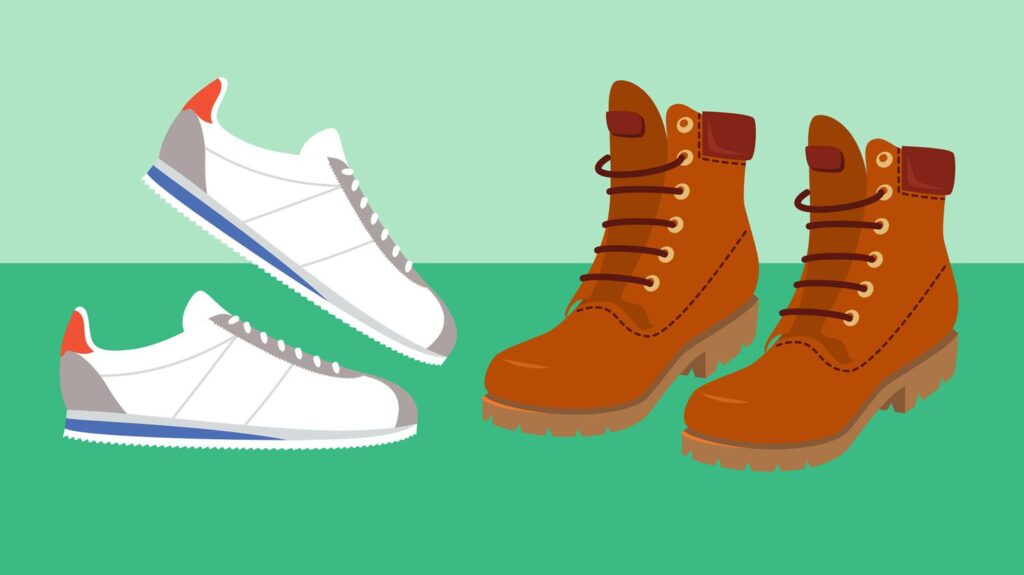
Maintenance and Care
Proper maintenance and care of athletic shoes are essential for preserving their performance, durability, appearance, and comfort over time. By following recommended care practices and routines, you can extend the lifespan of your shoes, prevent premature wear and tear, and ensure they remain in optimal condition for your workouts and activities. Consider the following tips for maintaining and caring for your athletic shoes:
Cleaning and Deodorizing
Regularly clean your shoes to remove dirt, grime, and odor buildup. Use a soft brush, mild soap, and water to gently scrub the uppers, midsoles, and outsoles of the shoes. Allow your shoes to air dry completely after cleaning to prevent moisture retention. Avoid using artificial heat sources like hairdryers, as they can damage the materials and alter the shoe’s structure.
Storage and Air Circulation
Store your athletic shoes in a cool, dry place with good air circulation to prevent mold, mildew, or odor development. Avoid storing shoes in enclosed spaces like plastic bags or containers, as this can trap moisture and lead to bacterial growth.
Avoiding Extreme Conditions
Protect your shoes from extreme temperatures, direct sunlight, and harsh weather conditions that can cause damage to the materials, fade colors, or weaken adhesives. Keep your shoes away from heat sources, moisture, and prolonged exposure to sunlight.
Rotation and Rest
Rotate between multiple pairs of athletic shoes to allow each pair to rest and recover between workouts. Alternating between shoes can prevent excessive wear, extend their lifespan, and maintain their cushioning and support properties.
Replacing Insoles and Inserts
Replace worn-out or compressed insoles and inserts in your athletic shoes to maintain proper cushioning, support, and comfort. High-quality replacement insoles can enhance the fit, performance, and longevity of your shoes.
Repairing and Resoling
Address minor damages, tears, or sole wear by repairing your athletic shoes promptly. Consider professional resoling services or shoe repair kits to extend the life of your favorite pairs and maintain their structural integrity.
Specialized Care for Different Materials
Follow manufacturer guidelines and care instructions for specific shoe materials like leather, mesh, knit, or synthetic. Use appropriate cleaning products, conditioners, or protective treatments tailored to the material type to ensure proper care and maintenance.
Regular Inspections and Upkeep
Conduct regular inspections of your athletic shoes for signs of wear, damage, or structural issues. Check for loose stitching, worn outsoles, creased midsoles, or separation of layers that may require repair or replacement.
Conclusion
In conclusion, choosing the right athletic shoes for your workouts is essential for comfort, performance, and injury prevention. By considering factors such as fit, comfort, support, cushioning, and durability, you can find the perfect pair of shoes to support your active lifestyle. Remember to prioritize your foot type, workout preferences, and budget when selecting athletic shoes to ensure the best fit and performance.
Also Read:

